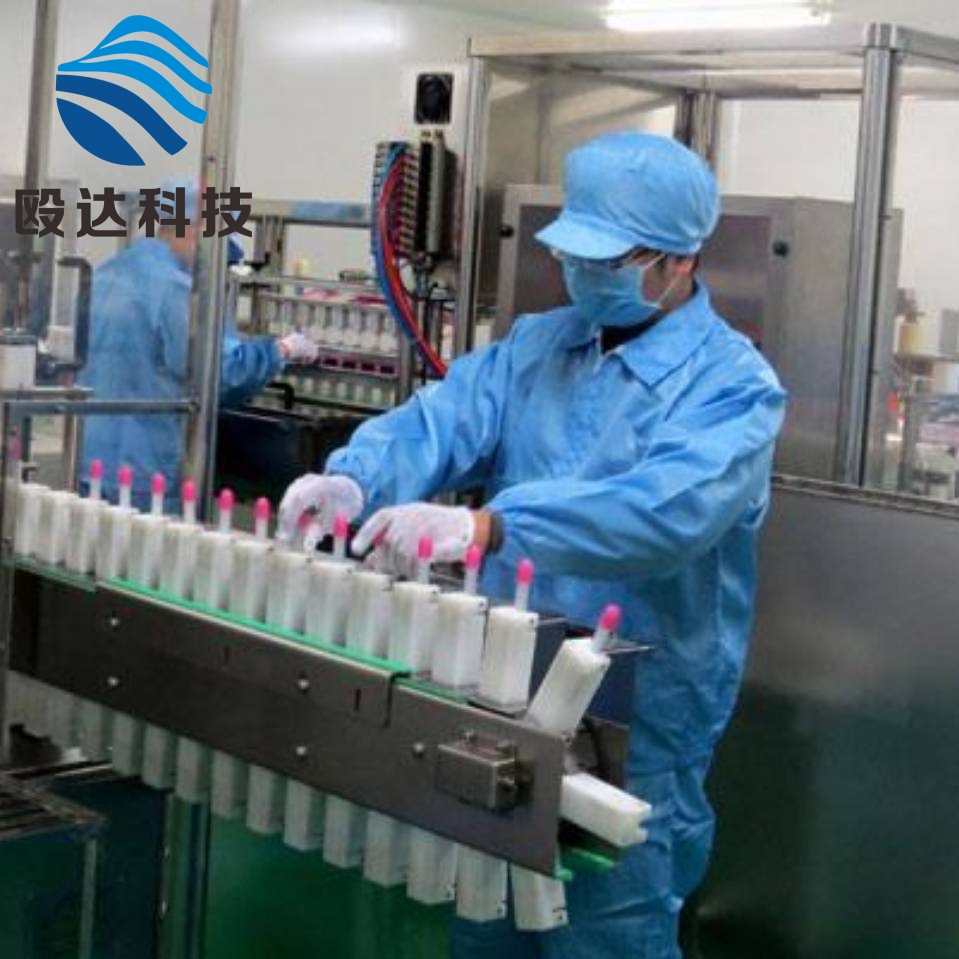-
Categories
-
Pharmaceutical Intermediates
-
Active Pharmaceutical Ingredients
-
Food Additives
- Industrial Coatings
- Agrochemicals
- Dyes and Pigments
- Surfactant
- Flavors and Fragrances
- Chemical Reagents
- Catalyst and Auxiliary
- Natural Products
- Inorganic Chemistry
-
Organic Chemistry
-
Biochemical Engineering
- Analytical Chemistry
- Cosmetic Ingredient
-
Pharmaceutical Intermediates
Promotion
ECHEMI Mall
Wholesale
Weekly Price
Exhibition
News
-
Trade Service
September 17, 2020 is the second World Patient Safety Day.
, according to the World Health Organization, the slogan of the second World Patient Safety Day is "Health workers are safe, patients are safe" and the call to action is "Voice for health workers safely!" "To raise the society's emphasis on the safety of health workers and to take effective measures to improve the safety of health workers and patients."
overall goal is to increase global understanding of patient safety, increase public participation in medical safety, and promote global action to improve patient safety and reduce patient harm.
health care commission on the "World Patient Safety Day" issued a message stressed: patient safety concerns the lives and health of the people, is the core of medical management.
to ensure patient safety and reduce avoidable injuries is the basic requirement of medical services.
Requires all regions to fully understand the importance of patient safety management in promoting the construction of healthy China, ensuring the quality and safety of medical care, and building a harmonious doctor-patient relationship, and to take safety as an important part of medical management, and vigorously promote patient safety management in accordance with the principle of "prevention-oriented, system-optimized, full participation and continuous improvement", and continuously improve the level of patient safety management in medical institutions.
fact, patient safety is becoming a huge challenge in global public health.
According to WHO, 134 million patient injuries in low- and middle-income countries each year are caused by unsafe medical care in hospitals, resulting in 2.6 million deaths per year; Ensuring patient safety has become a serious public health problem, how to effectively avoid patients in the process of medical diagnosis and treatment, improve the quality of hospital medical management and service level, is the focus of medical institutions managers must pay attention to.
, especially now still in the "shadow" of the new crown outbreak, do a good job in safety management, to ensure the safety of every patient, for the hospital is very critical.
, what are the effective ways to ensure patient safety? The arterial network attempts to comb and answer the problem.
does "patient safety" have to do with it? What is patient safety? U.S. authorities have defined patient safety as the absence of accidental injuries from medical or medical errors.
concept of patient safety covers three considerations: first, that excessive use of unnecessary medical services leads to patient safety;
zhou Changqiang, deputy director of the Medical Administration of the National Health And Wellness Commission, explained at a press conference on Patient Safety Day 2019 that patient safety mainly refers to reducing all kinds of risks in the medical process and in the hospital environment by adopting systematic and preventive measures, so that patients can minimize unnecessary injuries during their stay in the hospital and maintain the safety of patients and the entire medical environment.
The main contradictions faced by patient safety are: First, the aging of the population, the continuous growth of medical services, the development of new medical technology has brought new requirements and challenges to patient safety;
2020 patient safety concerns include COVID-19 coronavirus, missed and delayed diagnosis, early identification of maternal safety in continuous care, early identification of behavioral health needs, and equipment-related issues, according to the ECRI Institute, one of the U.S. Patient Safety Organization (PSO). 10 major issues such as response and learning, device cleaning, disinfection and sterilization, patient matching of safety in the entire health care system, management of antimicrobial drugs, over-authority administration when using automatic disinfecting cabinets, fragmented care in different medical settings, etc.
(Figure 1: The 10 Patient Safety Concerns disclosed by the ECRI Institute) in fact, our country has a number of policies in place to intervene in the face of patient safety.
For example, since 2005, we have organized and carried out activities such as hospital management year, medical quality, large-scale hospital inspection and action to improve medical services throughout the country, through improving the medical service process, strengthening the quality control of single diseases, building a hospital infection prevention and control system, improving the level of clinical blood security, strengthening the rational use of antimicrobial drugs management, quality care and other services.
to strengthen the standardized management of medical care, improve quality, improve services, ensure safety.
In addition, in 2017, the Hospital Authority and the Center for Health Care Management jointly established an active learning and reporting system for patient safety incidents, and in April 2018, the National Health and Wellness Commission issued a Notice on Further Strengthening patient Safety Management, which clarified the tasks of patient safety management in China in recent years and proposed 10 key measures to implement patient safety management.
we have combed through the following policies related to patient safety: (Figure 2: Patient safety-related policies) Under the supervision of policy intervention, the quality and safety level of medical care in China has improved significantly.
the mortality rate, the rate of pressure sores, the reaction rate of blood transfusion and other patient safety indicators have been reduced.
, there is still a lot of room for improvement by focusing on a single hospital body.
hospital sense is the most direct hidden danger of "patient safety" In 2005, 10 cases of patients undergoing cataract surgery in a hospital in Ceju City, Anhui Province, had a medical infection of the eyeball, of which 9 patients faced the malignant effects of removal of one-sided eyeballs; There have been cases of hepatitis C infection between hemodialysis patients at An County People's Hospital, 26 cases of hepatitis C infection due to hemodialysis in Shaanxi Province in 2016, and 69 cases of hepatitis C infection caused by irregular disinfection by medical staff at Dongtai People's Hospital in 2018.
A surgical center in New Jersey is likely to have infected more than 3,000 patients with HIV, hepatitis B and C because of poor drug storage, infection control programs and disinfection methods, the Daily Mail of New York reported in 2018.
data show that there are 2 million hospital infections in the United States each year, economic losses of up to $7.5 billion, 100,000 hospital infections in the United Kingdom each year, resulting in losses of $4.5 billion, China 4 million times a year.
The Ministry of Health of China stipulates that the incidence of hospital infections is less than 7%, that of level 2 hospitals is less than 8%, that of level 3 hospitals is less than 10%, and that the rate of under-reporting of hospitals at all levels is less than or equal to 20%.
2015 data from the Chinese Medical Infections Association, the direct economic loss caused by each hospital infection in China General Hospital was 11,229 yuan to 33,187 yuan.
1.4 million people worldwide are infected in hospitals every hour.
fact, many patients in the hospital complications are caused by infection, and 70% of hospital infections can be avoided through sensory control measures.
it is not difficult to see that the sense of hospital is undoubtedly the biggest direct impact on patient safety.
experts pointed out that with the development of medical technology, in the context of the increasing number of invasive treatment programs and the widespread use of antibiotics, the rate of hospital infection is increasing.
can we effectively control the sense of hospital? We analyze that, for the hospital side, the control of hospital sense, can be in the environmental quality management, nursing quality management, disinfection and sterilization management and other three aspects of governance.
environmental quality management, the number and variety of microorganisms in hospital air is more complex than the general environment.
How to create a good and healthy treatment environment for patients to prevent hospital infections, put forward requirements for the safety and quality control of environmental quality, nursing quality management, the need to improve nurse care technology, to provide patients with more refined, more specialized quality care services, thereby reducing the risk of hospital infection; In accordance with the "hospital disinfection supply center cleaning disinfection and sterilization technical operating standards" related standards, the development of a sound cleaning and disinfection sterilization system, and the use of effective cleaning and disinfection sterilization monitoring methods to ensure that foreign equipment cleaning disinfection and sterilization qualified;
, can an effective solution be found in the much-maligned disinfection process? Disinfection supply center is the hospital sense of the "heart", patient safety "pulse" disinfection supply center as the key department of hospital infection management, bear the hospital medical supplies disinfection supply work, washing, packaging and other aspects of the quality will affect the quality of sterilization, in order to achieve 100% of the sterilization materials qualified, disinfection supply center must be disinfection supply center to develop strict quality standards and management requirements: including disinfection supply center environmental layout, cleaning and sterilization quality, workflow and other dynamic monitoring.
hospital infection management department, nursing department to carry out monthly disinfection supply center to carry out key inspection, disinfection supply center is also the higher department of the hospital quality and management of the key inspection project.
during surgery, the use of medical devices can not be avoided, and the treatment of medical devices slightly improper can easily lead to in-hospital infection events, the patient's surgical effect and prognostic are potentially threatening.
(Figure 3: Hospital Disinfection Supply Center) According to relevant news reports, in 2009, a hospital in Guangdong Province due to non-conformity of surgical instruments sterilization led to 18 patients surgical incision infection; In 18 years, a subsidiary of the manufacturing company of a medical endoscope was infected by the cleaning and disinfection of endoscopes, and in 2019, nearly 600 patients may be at risk of contracting various infectious diseases such as HIV by not disinfecting medical equipment at a dental clinic called Dentality Hoddesdon in London, UK. In response to this situation, a hospital experts in Fujian pointed out that the hospital disinfection supply center and clinical department in cooperation with the problems are mainly reflected in three aspects: First, the initial treatment of pollution equipment is not in place, in accordance with the requirements of the use of pollution equipment after the use of the department should do a good job of initial washing and recycling to disinfection supply center treatment, but often found that recycling to disinfection supply center of some surgical instruments did not carry out preliminary treatment, equipment corrosion rust, increase the difficulty of cleaning and cause cleaning quality.
used in the course of surgery blades, stitches, disposable syringes, etc. were not put into the sharp box in time, it is very easy to cause disinfection supply center personnel sharp wounds.
II, the transfer of goods management is not standardized, in accordance with the norms requires pollution equipment can not be counted in the clinic, disinfection supply center after recycling clinical department items according to the department registration name, quantity and inform the department, after sterilization according to the list of the registered book sent, the same day the two sides handover no objection;
3. Lack of effective communication, operating room and disinfection supply center due to different professional nature, do not understand the supply room after standardized management workflow, lack of replacement thinking, once the equipment damage or lack of the first responsibility to the disinfection supply center staff, the two sides are prone to friction, affecting the disinfection supply center staff mood, easy to feel frustrated.
2016, after the introduction of the new "Hospital Disinfection Supply Center Standard", the hospital disinfection supply center put forward higher requirements. The
new version of the "Standard" further emphasizes the specific requirements of centralized management, the standardization of CSSD information construction requirements, the addition of implants and external medical device management requirements, the increase of third-party disinfection supply services management requirements, straightening out the internal management responsibilities and requirements of hospitals, the refinement of CSSD building layout and workflow, as well as the use of third-party disinfection supply services requirements.
new situation, how can the work of disinfection supply center be repositioned? We find that for hospitals, disinfection supply center is the cost center of the hospital simply expenditure is not effective department, but also occupies a large part of the hospital business room and professional nursing staffing staffing and other hospital resources, in general, a public hospital to build their own disinfection supply center fixed asset investment amount of 10-20 million yuan, which does not include labor allocation costs and maintenance costs.
faced with the pressure of policy supervision and high cost, experts suggest that, in view of this situation, the current hospital side in addition to the self-built disinfection center to complete disinfection work, but also through outsourcing to a third-party disinfection center to complete.
third-party efforts to improve the quality and safety of hospital disinfection and sterilization efforts.
third-party disinfection supply center (CSSD) is mainly in the face of unbuilt disinfection supply center hospitals, as well as disinfection supply centers face new, modified, expansion needs of hospitals to provide disinfection outsourcing services.
including all kinds of reusable medical equipment, surgical instruments, clean surgical clothing, surgical products and other items cleaning and disinfection, inspection and assembly, sterilization, logistics and distribution and rental services, and carry out the quality control of the process, issued the results of the disinfection and sterilization process monitoring results, to achieve the whole process of sterile disposal traceable, to ensure the quality of disinfection.
for hospitals, outsourcing disinfection centers through third parties can be beneficial.
first of all, enterprises to establish an independent disinfection supply center does not need to occupy hospital land resources, by enterprises to buy land construction and management and operation, can alleviate the shortage of hospital land, the plight of insufficient personnel.
second, third-party disinfection supply center infrastructure, disinfection equipment, disinfection supplies, etc. are all enterprise investment, hospitals through disinfection outsourcing can reduce this huge cost.
, enterprises adopt professional, standardized management mechanism, more efficient than hospital management mechanism, and lower risk, with higher security.
(Figure 4: Third-party disinfection supply center effectively solves the pain point of the hospital) Shandong University of Traditional Chinese Medicine second affiliated hospital experts in the "socialization of disinfection supply cost-benefit analysis" of the study shows that, through the comparison of the two disinfection supply centers, the third-party disinfection center compared to the hospital-built disinfection supply center can not only improve the disinfection pass rate by 10%, but also save about 5% in cost.
(Figure 5: Hospital disinfection supply center and third-party disinfection center cleaning.)







